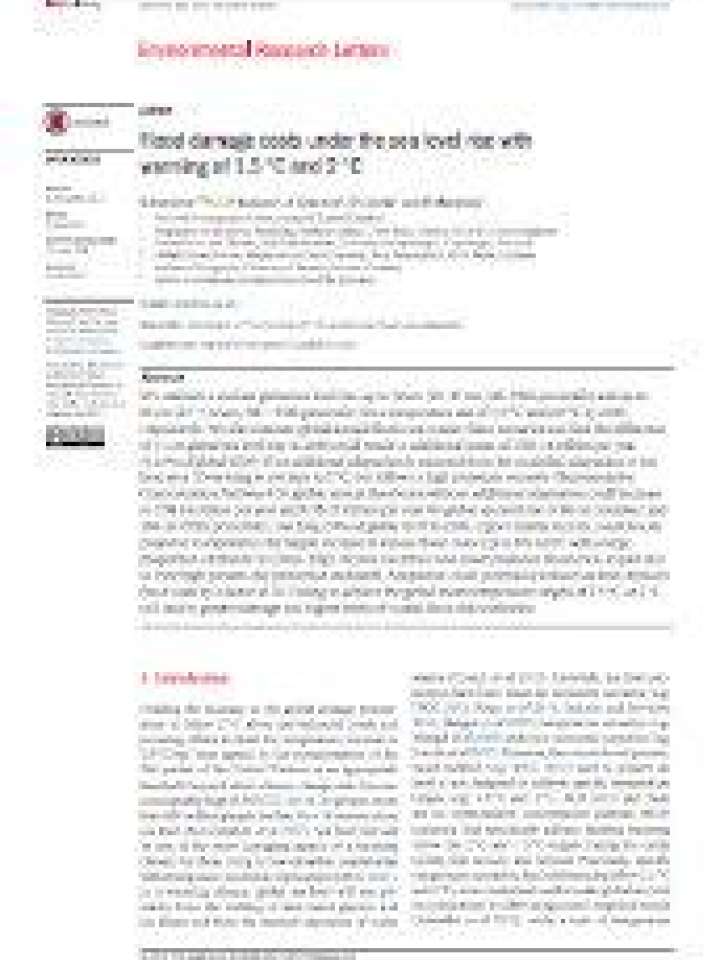Flood damage costs under the sea level rise with warming of 1.5 °C and 2 °C
This paper estimates a median global sea level rise up to 52 cm (25–87 cm, 5th–95th percentile) and up to 63 cm (27−112 cm, 5th—95th percentile) for a temperature rise of 1.5 ◦C and 2.0 ◦C by 2100 respectively. It also estimates global annual flood costs under these scenarios and find the difference of 11 cm global sea level rise in 2100 could result in additional losses of US$ 1.4 trillion per year (0.25% of global GDP) if no additional adaptation is assumed from the modelled adaptation in the base year.
If warming is not kept to 2 ◦C, but follows a high emissions scenario (Representative Concentration Pathway 8.5), global annual flood costs without additional adaptation could increase to US$ 14 trillion per year and US$ 27 trillion per year for global sea level rise of 86 cm (median) and 180 cm (95th percentile), reaching 2.8% of global GDP in 2100. Upper middle income countries are projected to experience the largest increase in annual flood costs (up to 8% GDP) with a large proportion attributed to China. High income countries have lower projected flood costs, in part due to their high present-day protection standards. Adaptation could potentially reduce sea level induced flood costs by a factor of 10. Failing to achieve the global mean temperature targets of 1.5 ◦C or 2 ◦C will lead to greater damage and higher levels of coastal flood risk worldwide.
Explore further
